#David O. Rogers
Explore tagged Tumblr posts
Text
'“Ripley” editor Joshua Raymond Lee explains about his collaboration with fellow editor David O. Rogers, “The first passes of many things were done by Dave and also Lillian Pachter, who’s our first assistant editor … When I started in post I sort of had this different dictate from [creator, writer and director Steven Zaillian] to take fresh cracks at assembling many of the episodes.” This “was a really strange and different exercise to do as an editor, but I think it produced some fruitful results.”...
Based on the sinister con artist created by author Patricia Highsmith, “Ripley” follows its title character (played by Andrew Scott) as he conspires his way into a new life in Italy. Zaillian wrote and directed the whole eight-episode series, so “the entire thing was like an eight-hour-long feature film,” according to Lee, “so it was essentially like we were working on one project together, even if some responsibilities fell to one or the other of us.” Rogers observes that Zaillian was “very in-tune to everything, every component of filmmaking. Anything you see, meaning the pencil holder on the desk and the things that are hanging on the wall and all of that, he would be very meticulous and come into the frame sometimes and move things around to get things just right for both wide and close shots.”
Among the most memorable scenes of the series (SPOILER ALERT) is the prolonged sequence where Tom Ripley kills the wealthy Dickie Greenleaf (Johnny Flynn) on a boat and tries to cover up the crime. Rogers remembers, “We sort of built it and then started to chip away at the block of marble to try to get what we needed out of it. They shot the conversation part of it with Tom and Dickie with different angles, some high angles and things like that, so we had a couple of different versions.” Lee adds that the goal was “to properly put ourselves in the mindset of Tom and the way in which the action is suddenly arrested from the way we normally move through time.” The murder happens “suddenly out of nowhere, and suddenly time halts to a stop and moves at almost a completely realistic pace.”
When it comes to editing in general, Rogers says his inspiration “starts with the script,” but he doesn’t have one “standard approach because every show has its own particular style, whether it’s dialogue driven or more visual like this.” For Lee as well, “first and foremost, it’s about the script, and what excited me about this one was Steve’s writing, both for its humor and just the way he writes dialogue, which is so relatable and funny and interesting and dark.” What also stood out was that “the scripts added up to about 500 pages,” but “there were a hundred of those pages that were just single-spaced scene description,” which made Lee realize that “it’s all going to come down to the cinema of it, to the techniques that he employs to capture it on camera, and then to what we would have to play with and discover in post, and that turned out to be very true.”'
#Ripley#Netflix#Joshua Raymond Lee#Steven Zaillian#Andrew Scott#David O. Rogers#Lillian Pachter#Dickie Greenleaf#Johnny Flynn
2 notes
·
View notes
Text
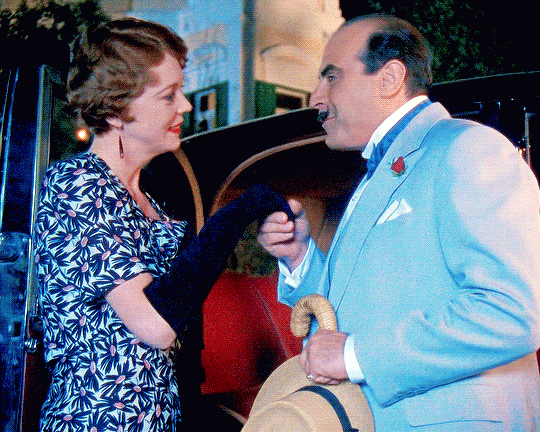
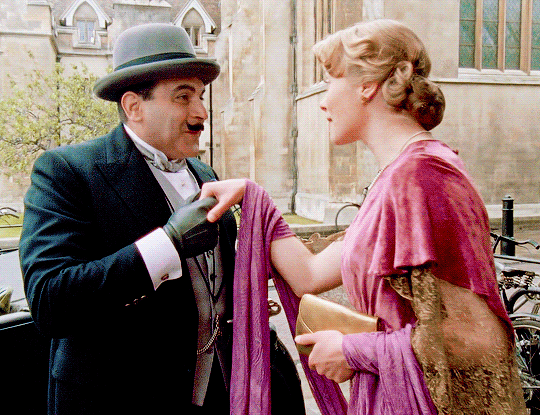
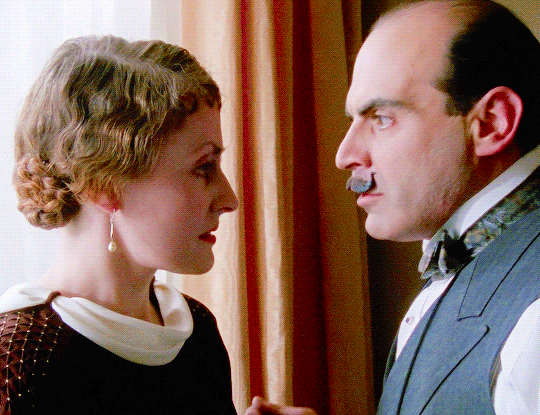





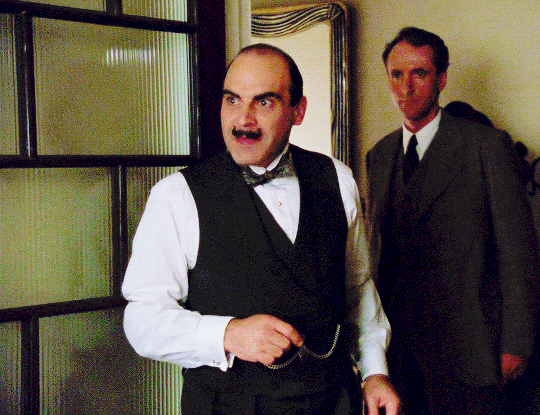

(´ε` )♡
AGATHA CHRISTIE'S POIROT (1989 - 2013)
#poirot#hercule poirot#agatha christie#david suchet#tvedit#perioddramaedit#poirotedit#*edit#poirot 1x06: triangle at rhodes#poirot 1x10: the dream#poirot 3x01: the mysterious affair at styles#poirot 4x01: the abc murders#poirot 5x04: the case of the missing will#poirot 6x01: hercule poirot's christmas#poirot 10x04: taken at the flood#poirot 7x01: the murder of roger ackroyd#HAVE SOME POIROT KISSES <3<3#the way he looks at the lady in the 6th gif *o*#or in the 8th gif when he meets her eyes#EXCUSE ME sir <3
653 notes
·
View notes
Photo
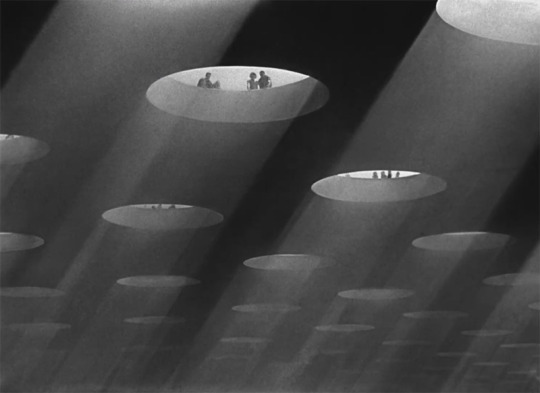

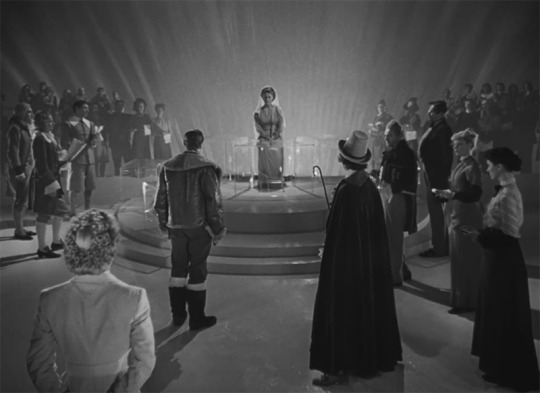
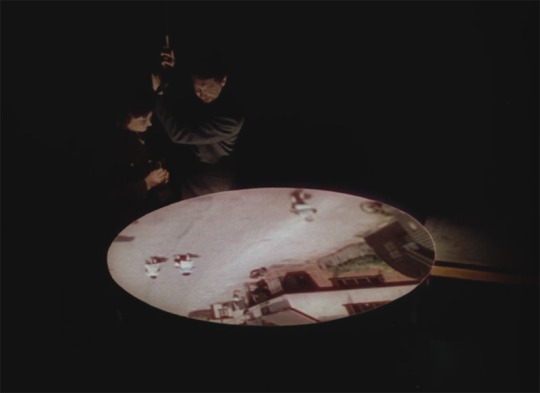
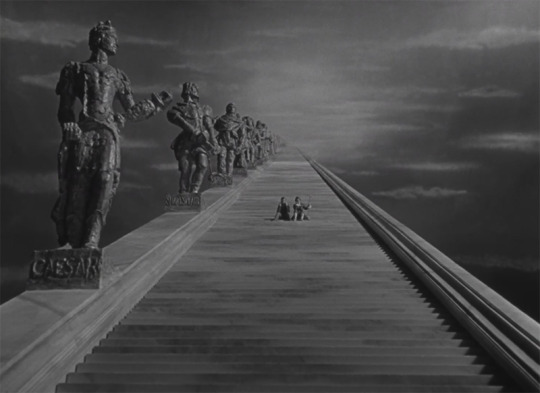





A MATTER OF LIFE AND DEATH (Michael Powell & Emeric Pressburger, 1946)
“A weak mind isn't strong enough to hurt itself. Stupidity has saved many a man from going mad”
#a matter of life and death#stairway to heaven#a vida o muerte#michael powell#emeric pressburger#david niven#kim hunter#roger livesey#raymond massey#abraham sofaer#richard attenborough#kathleen byron#robert coote#marius goring#film#cine
174 notes
·
View notes
Text
hi guys does anyone wanna request me to draw silly pictures of old dudes from bands so i can practice please 🙏😊
#george harrison#pink floyd#the beatles#beatlemania#david bowie#marc bolan#paul mccartney#the who#classic rock#grunge#roger waters#bob dylan#jeff buckley#the smiths#morrissey#johnny marr#lou reed#the cure#depeche mode#type o negative#kate bush#the clash#punk rock#60s music#70s#goth music
6 notes
·
View notes
Text
A Christmas Carol (1984)
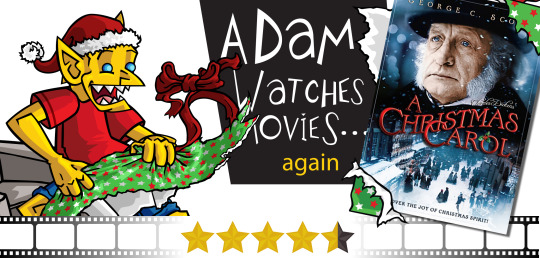
There are many adaptations of Charles Dickens's A Christmas Carol to choose from for your Holiday Christmas marathon. Many consider this 1984 version by Clive Donner the one to go with. If you ask me, no Christmas season is complete without viewing either Alastair Sim or George C. Scott as Ebenezer Scrooge.
Ebenezer Scrooge (Scott) is a bitter miser who considers the ideals and spirit of Christmas pure humbug. He hesitates to give his underpaid assistant Bob Cratchit (David Warner) the day off and scoffs at his nephew Fred (Roger Rees) when he suggests a holiday dinner. One cold Christmas Eve, the ghost of Scrooge's former partner Jacob Marley (Frank Finlay) appears to him with a warning "You will soon be visited by three spirits, heed their counsel and change your ways or risk an eternity of suffering."
Though originally made for television, this is a top-notch production. The locations/sets transport you to 1843 London like a Ghost of Christmas Past and the costumes all look authentic. The stage is set and George C. Scott is perfect for his role. One look at the actor and you can practically see every time he's rolled his eyes at the concept of charity. He delivers the over-the-top dialogue like it was written for him but Scott also grounds the story in reality. It makes the drama that follows that much more powerful. Scrooge is a miserable, horrible person… but he’s still a person. His journey through the many Christmases the ghosts take him through rouses intense emotions.
So much of what makes this story endure is the message. Christmas is a joyous time, but it can be scary under certain lights. That uniformly white blanket over everything, the bare branches swaying in the frigid wind, the shortening days, the cold… the idea of ghosts emerging from the darkness just fits. These fears are juxtaposed by this renewed hope of salvation, the explosion of generosity and the potential for miracles. A Christmas Carol taps into all of those sentiments. There are talks of gifts but no commercialism. It’s about the importance of relationships with loved ones and what you must do to keep them close to you. That's not to say any adaptation is a hit; the cast and the production's dedication make this a special rendition of the timeless story.
There’s only one flaw with the film: the portrayal of the Spirit of Christmas Past by Angela Pleasence. It isn’t her performance; it’s that unless you know what the movie is trying to do, she'll leave you scratching your head. She’s supposed to be candle-like: a light that could easily be put out (which is why we see Scrooge extinguish her with his cap). You can't tell unless you already know. Otherwise, everything you want to see in this story is there. The comedy of a miser so cheap he won’t even spend money to keep himself comfortable, the drama over lost love and seeing a heart grow cold, the warmth of redemption and the horror of the ghosts. As a child, I distinctly remember seeing the Ghost of Christmas Present (Edward Woodward) showing off Scrooge’s “children” to him and finding it terrifying.
It’s easy to become bitter around Christmas. Even if you don’t feel like the true meaning of the holiday has eroded, there’s so much pressure and so many high expectations that are rarely met. 1984's A Christmas Carol is the perfect remedy for any bitter sentiments. Whether you see yourself as Ebenezer Scrooge and need to be shown the error of your ways or you’re his nephew and need your faith in others renewed, this is the movie for you. Its final scene always brings tears to my eyes. (December 14, 2020)
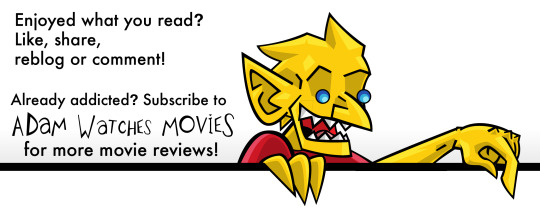
#A Christmas Carol#movies#films#movie reviews#film reviews#Clive Donner#Roger O. Hirson#Charles Dickens#George C. Scott#Frank Finlay#David Warner#Susannah York#Edward Woodward#Roger Rees#Liz Smith#1984 movies#1984 films
6 notes
·
View notes
Text
Volume 264



0:00:00 — "The Beginning" by David Rogers & Paul Shaw (1990)
0:03:53 — "On Air" by David Rogers & Paul Shaw (1990)
0:07:08 — "Dreamspeak" by David Rogers & Paul Shaw (1990)
0:10:51 — "Malibu Queen" by Alan Hawkshaw (1985)
0:14:06 — DJ
0:17:08 — "Improvisation pour Orgue et Saxophone #1" by Bertrand Eluerd (1990)
0:19:10 — "Our World 2" by Paul Williams (1992)
0:20:44 — "Cover Girl" by Ron Aspery (1985)
0:23:22 — "Valley of Mists (A)" by Keith Mansfield (1989)
0:25:28 — "Double Helix (A)" by Keith Mansfield (1989)
0:27:54 — "Palm Innocence" by Iasos (1983)
0:30:37 — "Dark (Kip's Tune)" (Edit) by Kip Hanrahan (1985)
0:31:17 — "Magical" by Anthony Phillips (1991)
0:34:11 — "First Light" by Milan Pilar (1993)
0:38:27 — "Dance of Medusa" by Milan Pilar (1994)
0:43:24 — "Digital Structures 24" by Milan Pilar (1990)
0:45:07 — "Raindance" by O Yuki Conjugate (1987)
0:52:01 — "Jump Monk" (Edit) by Don Alias & Michael Blair & Art Baron & Bill Frisell & Gary Lucas & Greg Cohen (1992)
0:53:36 — "Desert Mirage" by David Vorhaus (1993)
0:56:34 — "Sirens" by Steve Everitt (1994)
1:00:21 — "Nomadic 1" by David Hentschel (1990)
1:02:01 — "Manta Ray" by Eric Vann (1982)
1:03:46 — "Primordial Germination" (Edit) by Geinoh Yamashirogumi (1986)
1:05:45 — "Love Magick" (Edit) by Steve Roach & Robert Rich (1992)
1:09:14 — "Touch" by Steve Roach & Robert Rich (1992)
Stream
Download
#david rogers#paul shaw#alan hawkshaw#bertrand eluerd#paul williams#ron aspery#keith mansfield#iasos#kip hanrahan#anthony phillips#milan pilar#o yuki conjugate#don alias#michael blair#art baron#bill frisell#gary lucas#greg cohen#david vorhaus#steve everitt#david hentschel#eric vann#geinoh yamashirogumi#steve roach#robert rich
2 notes
·
View notes
Text
Astaire & Rogers and the 1930s Aesthetic Part One: Flying Down to Rio
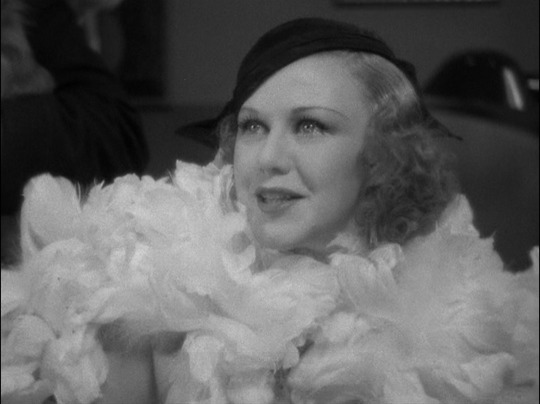
View On WordPress
#"Carioca"#"When Orchids Bloom in the Moonlight"#1930&039;s#42nd Street#Adele Astaire#Albert Chase McArthur#Arizona Biltmore#Cimarron#Claire Boothe Luce#Clark Gable#Dancing Lady#David O. Selznick#David Sarnoff#Dolores del Rio#Film Booking Office of America#Flying Down to Rio#Fred Astaire#Gene Raymond#Ginger Rogers#Gold Diggers of 1933#Hermes Pan#Joan Crawford#Joseph P. Kennedy#Keith-Albee-Orpheum Vaudeville Circuit#KEM Weber#Lela Rogers#M-G-M#Merian C. Cooper#R-K-O Radio Pictures#Raul Roulien
0 notes
Text
Thank Goodness it's Thursday Part 3 - Friday the 13th Part III (1982)
In today's review, I find the style choices of the 80s really stick. As I attempt a #positive review of the second slasher sequel Friday the 13th Part III #DanaKimmell #PaulKratka #TracieSavage #JeffreyRogers #CatherineParks #LarryZerner #DavidKatims
You cannot tell what will be remembered. Sure, you can hedge your bets for a bit, but the audience will latch on to something, almost insignificant, like a particular line delivery, or a certain look, and that will help preserve a fleeting moment into immortality. With the iconography of the Eighties being codified, a killer trying a new look to distinguish themselves helped propel the franchise…
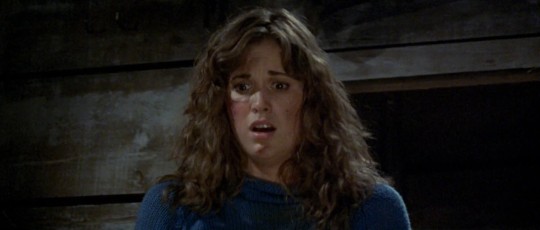
View On WordPress
#1982#Amy Steel#Betsy Palmer#Catherine Parks#Cheri Maugans#Dana Kimmell#David Katims#David Wiley#film#films#Gloria Charles#horror#Jeffrey Rogers#John Furey#Kevin O&039;Brien#Larry Zerner#Movies#Nick Savage#Paul Kratka#Perla Walter#positive#Rachel Howard#review#Richard Brooker#Steve Dash#Steve Susskind#Tracie Savage
0 notes
Text
On February 2, 1991 Sorority Babes in the Slimeball Bowl-O-Rama and Barbarian Queen were screened as a double-feature on USA Up All Night.


#usa up all night#sorority babes in the slimeball bowl o rama#sorority babes in the slimeball bowl o rama 1988#barbarian queen#barbarian queen 1985#david decoteau#dawn dunlap#monster movies#roger corman#exploitation films#grindhouse movie#comedy movies#jungle adventure film#adventure thriller#adventure film#sexploitation movies#sexploitation films#horror art#horror movies#horror film#horror#comedy horror#movie art#art#drawing#movie history#pop art#modern art#pop surrealism
1 note
·
View note
Text
Ahh yes, the moaning video
The way these two laugh is killing me.
(source)
#the source brings back memories#and it’s not good ones#anywaysss..#P E N E T R A T I O N#pink floyd#roger waters#david gilmour
57 notes
·
View notes
Text
Day 2 Highlanders 7 con 20 July 2024 at the Hilton Metropole Hotel, Birmingham
Fan Meet with Richard:
If he's a betting man there will be Rebus 2 (with a wink)
Hasn't read more than 4.5 books (of OL) couldn't get through the Gathering in Fiery Cross
Everyone's really sad about it ending
Doesn't like the stickers chosen for the Rebus books but the author did so he was outvoted
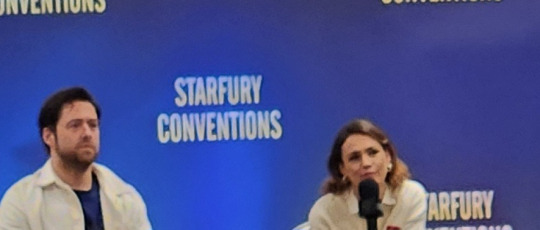
Charles & David Q&A
As part of training for the roles, they were taught them how to stand and sit using the "Alexander Technique" Demonstrating the "Alexander Technique" of how to stand up straight 18th-century style 👇
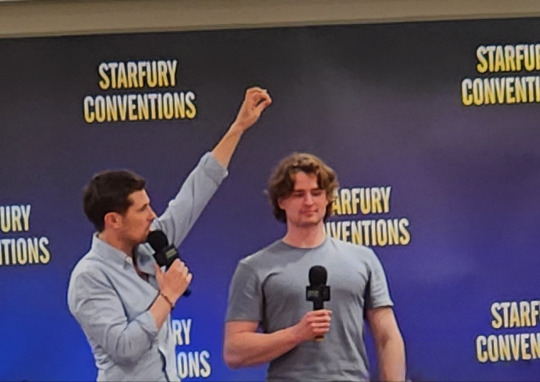
Question: if you could play another character who would it be: David - BJR; Charles - didn't know - fusion of LJG and Jamie
What won't you miss after OL ends - David travel; Charles didn't answer the question but said he'll miss his friends in Glasgow
Who would you go to a convention to see - Charles Eddie Vedder & Robin Kimmerer (author); David couldn't name anyone
Richard, Charles and Jamie Roy play Magic the Gathering (red: a card game) together almost every day when not working
When asked about a LJG series, David said if people want it he'd be up for it and people need to speak up about it
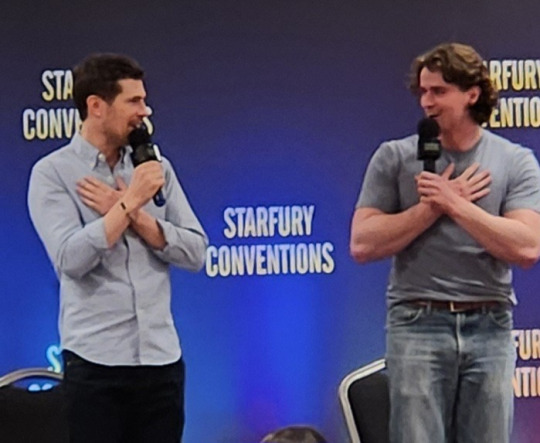
David and Charles singing O Canada 👍

Charles can walk on his hands - went back and forth 3x
Richard & Sophie Q&A
What song would describe your relationship on the show: Sophie - Lover (Richard joked Tolerater)
What role would you like to play: Sophie - Black Swan; Richard - Wolverine or Iron Man
Richard & Sam made different animal noises each take during the birthing scene
Hardest scene they had to film: Sophie - physically the ones with the horses; Richard - one where Brianna tells Roger Jemmy might not be his
If you could take a character ahead in time to see something - Sophie BJR to see Frank; Richard Jamie Fraser into the modern world - Richard loves Sam's reactions to modern things
What are you binge watching? Sophie - The Bear; Richard - Queen of the South and BBT
Sophie spoiler: Joey and I were in a tent (Richard adds "in the 80s")
Who would you go to a convention to see? Richard - BBT, Peaky Blinders: Sophie - Friends
They don't really get recognized in the UK but yes in the US "people in England don't really watch Outlander" (Sophie) - when they started in S2/3 it wasn't really "present", especially in Scotland.
Taken anything from set? Sophie very tempted to take the pearls but hasn't taken anything yet; Richard not yet either (made a joke about the musket balls and Lallybroch in the 80s trying not to spoil anything)
What song represents your character - Sophie "Girl on Fire" because she powers through things
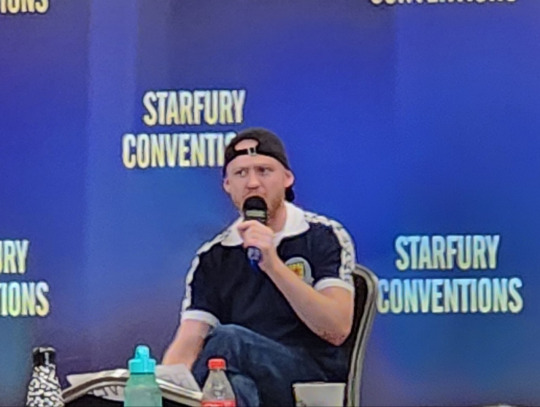
Ed Speleers & Steven Cree
Favourite role so far - Jack Crusher (Ed)
Cree - best part of Outlander is the conventions
Favourite scene was when Bonnet kidnaps Brianna and they explain how he became what he is
Ed read for LJG and they came back to him the next year with Bonnett
Cree auditioned for Dougal (who's the guy who raised $250K for a film then never made the film? - ouch!!). Then they cast Sam and had to make Dougal age appropriate
What era would you time travel to: Ed - 60s: Steven - his early 20s
Sam created MPC and whisky "unlike the guy who embezzled $250K" (ouch again!! Cree used the word "embezzled")
Cree to Sean - how does it feel to be a millionaire? Sean - pass me your phone I'll call Sam and ask him
Cree was offered roles in Bridgerton 1 & 2 and said no after he read the scripts
Cree went on for 5 minutes about how Claire brought Jamie back to life in Monsters & Heroes - it was hilarious
Seems that the 2 of them (Cree and Ed) go way back and are good friends (Ed said Cree was the most excited when he landed the star trek role. They wouldn't ever have crossed paths on OL. They know each other's families too.)
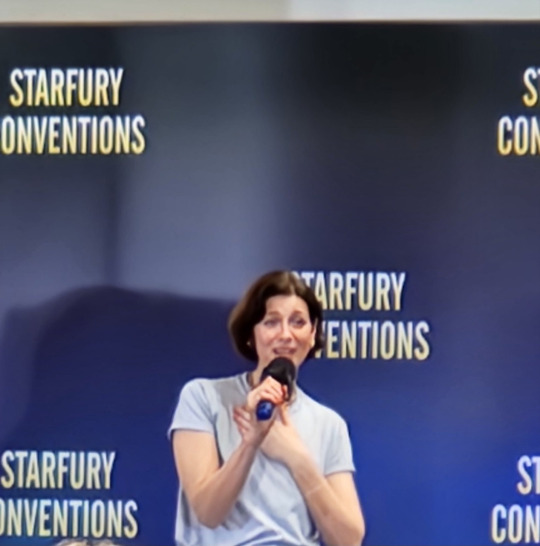
Caitriona
Funniest lines she couldn't get through - where she asks BPC if the bite was from a monkey and when Ian offers to go looking for Jamie and Claire says "but you don't have a leg"
Prefers to be called Caitriona
They talked about the ending of the books and someone yelled "Sam knows" then she said Sam THINKS he knows
Will be odd knowing they're not going back to Scotland when they finish filming. Couldn't say if they're staying but her husband is from Scotland and her in-laws live there so they will be there in some capacity
Costumes in S8 are her favourite since S2 Paris
Thanked everyone and said how much doing the show has meant to her
Asked if she and Tony share the same musical taste. She thought they said Sam and Steve said "no, your real husband" (she does with Tony, "definitely not" with Sam)
To prepare for Claire & Frank since they had a history, she and Tobias wrote each other letters. Tobias would redact his because he was in MI6. They didn't do anything to prepare for Claire & BJR because she didn't know him
During the rapid-fire someone asked "Sam's whisky or Graham's bourbon". She said Sam's whisky but hasn't tried the bourbon (she doesn't really like bourbon it's too sweet)
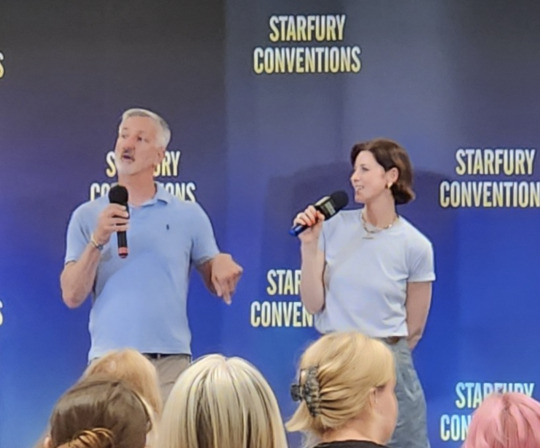
All credits to my reporter at the con (who chose to remain anonymous), including the pics.
93 notes
·
View notes
Text
'In 2018, when Steven Zaillian began writing a first draft of Ripley — his TV adaptation of Patricia Highsmith’s 1955 novel The Talented Mr. Ripley — one item in his office made its way into his screenplay: the heavy crystal ashtray that (spoiler alert) kills Freddie Miles in the fifth episode.
But Zaillian’s foray into the story of con man Tom Ripley started long before 2018. Ten years ago, a unique proposal popped up on his radar — a TV series. “If it had been proposed as another movie, I would’ve said no,” he tells THR, “but as an eight-hour series, I thought, ‘This could be interesting.’ ”
For starters, he wanted the limited series — about a grifter, Tom Ripley, who covets, and then kills for, the lifestyle of his wealthy former classmate Dickie Greenleaf — to be in black and white. “When I first read the book, it’s how I felt it should look. Later, it was important to the story that it not be some kind of Technicolor Italy, that the story was more atmospheric than that, in a darker, more sinister way.”
Andrew Scott was promptly cast as Tom Ripley, says Zaillian. “I’d tried to cast him in a part in [the 2016 Emmy-winning limited series] The Night Of, but I didn’t know what he looked like because I’d only heard him in a movie called Locke: He played a character whose voice was on the telephone, and he created a rather full-rounded character with just his voice. He was my first choice.”
Scott received the entire series of scripts, a “highly unusual thing,” from the get-go. “I knew it was going to be very arduous — there was just such a huge amount of acting. I learned Italian for three or four months. Other than that, I suppose a lot of my work were things I had to work out on my own. And that was fine because I was dealing with a character who has a lot of secrets.”
Dakota Fanning, Johnny Flynn and Eliot Sumner rounded out the central cast as Marge Sherwood, Dickie Greenleaf and Freddie Miles. “When Steve laid out his vision for a cold, dark, noir aesthetic and tone, I was absolutely sold,” says Flynn (who played David Bowie in Stardust). “Dickie is a casualty in the story — everything is seen via Tom’s perspective — and I really liked that. It feels like he’s not completely real in a stylistic sense. He is what Tom sees of him.”
Fanning says she felt no pressure to mimic the performance of Gwyneth Paltrow, who played Marge in the 1999 film The Talented Mr. Ripley. “There was relief that we were not trying to remake any iteration of the story,” she says, “and that we got to create our own versions of the characters.”
Zaillian wrote the first draft in a “quick” 18 months (it takes him a year to write a feature film, he says), and in November 2019, he and production designer David Gropman started location scouting. Their work continued until the COVID pandemic shut down production in March 2020, pushing the production design work to January 2021 and filming to July. “When we went back to Italy, most of Europe was still in lockdown,” says Gropman. “We scouted the Piazza San Marco and the Guggenheim Museum in Venice with not a soul in it. Strangely enough, it felt like the mood of the film and the world Steve wanted to show: very lonely and empty.”
Location scouting all over Italy, Zaillian and Gropman covered enormous ground, ultimately choosing to shoot in New York City and Italian locations: Atrani, Rome, Venice, Naples, Sicily and Capri. Three researchers in Italy, one in England and one in the United States helped the production designer nail down the aesthetics of the 1960s. “Obviously, there was color photography, but we’re not just looking at 1960 — we’re looking at those worlds 10 years earlier, because of course everything isn’t circa 1960: It was created, used and worn before that, certainly in styles and architecture,” explains Gropman.
Train stations figure prominently in the series as Ripley outruns his crimes by traveling through Italy, and Palazzo dei Congressi — built for the 1942 Universal Exposition — stands in for the exterior of the Rome train station. For the interior, 300 feet of platform was built at a train yard in Rome, and rotating columns differentiated the look of the Rome, Venice and San Remo stations. Five period cars were brought in from Milan. For Naples, Gropman used archival plans and photographs from the 1800s to re-create its station at a now-shuttered hospital in Rome.
The baroque sets gird the atmosphere of dread and beauty. Tom’s Rome apartment and its building’s stairway and elevator (the sites of some athletic body dragging), the interior of Marge’s Atrani apartment, and a Palermo pensione were all built on a Rome stage. Tom’s Venice palazzo was filmed at the Palazzo Polignac, while the American Express building was shot at the Palazzo delle Poste in Naples. Most stylish of all is Dickie’s Atrani mansion, which is the actual Villa Torricella in Capri. Fans can Airbnb it (sadly, there are no openings for months, though the fee is, unexpectedly, less than $300 a night).
Costume designers Gianni Casalnuovo and Maurizio Millenotti scoured photography books, vintage family albums found in street markets, and major archives across Italy. In the process, says Casalnuovo, they discovered “a treasure trove of unpublished photographs capturing everyday life, providing invaluable insight into the social fabric and atmosphere of each location.”
For Tom’s New York style, they researched fashion magazines and street photography to ensure a clear distinction between the American and Italian aesthetic. His initial wardrobe is modest, with off-the-rack clothing in simple cuts that “establish him as an outsider,” says Casalnuovo. By the end of the show, Tom is “clad in impeccably tailored suits, in luxurious textures that hint at a higher social status, and sports flashier accessories” — including plot-critical Ferragamo shoes — “all carefully chosen to project an image of success and belonging.”
Dickie Greenleaf’s ring, which establishes his privilege and propels the narrative as Tom takes on his persona, was created by a jeweler from detailed sketches inspired by 1950s magazines. Out of a series of prototypes, Zaillian selected the final (damning) ring.
Ripley was initially set up at Showtime, but moved to Netflix in February 2023 after the network decided not to proceed with the series. Initially, both Netflix and Showtime had been interested in making the show. Showtime required a color version of the series, which they also delivered to Netflix. (Netflix has no plans to release a color version.) As such, the series was not shot with a black-and-white camera, but with a standard Alexa LF that recorded color information; the filmmakers had the lab remove the color from the image files and create only black-and-white images for the dailies. “The lab essentially turned the color dial to zero,” says Elswit. With black and white, the DP continues, “Steve wanted to emphasize the play of light and shadow, not just in the world but also on people’s faces — the emotional reason why things wanted to [be felt] in monochrome.” Elswit says Caravaggio, the artist whose work is prominently featured throughout the series and is known as a master of light, was an inspiration.
Meanwhile, knowing their work would be seen in black and white presented a challenge for the costume designers. “We had to forgo the initially chosen vibrant vintage garment and fabrics. Instead, we focused on using shades of black, white and gray to create a distinct atmosphere for characters and scenes,” says Casalnuovo.
Scott, who notes that Zaillian doesn’t do rehearsals, says the first scene that was shot took place in Tom’s New York boarding house, in which he is defrauding somebody over the phone in episode one. Shortly after that, they filmed the Dickie Greenleaf and Freddie Miles murder scenes. “My biggest job was to keep my playfulness alive and to not get too overwhelmed by the enormity of the task,” says Scott.
Elswit says the most technically difficult sequence to shoot was Dickie’s murder on the boat. Because Zaillian wanted the scene to look overcast rather than lit by direct sunlight, the team shot the killing scene in a large swimming pool south of Rome, where they blocked the sky with charcoal silk, using a greenscreen to replace the sky and water, which were filled in by Weta FX in post. Editors Joshua Raymond Lee and David O. Rogers say they had about 2,500 VFX shots in the series, “significantly more than had been initially anticipated.” The boat itself remained stationary — three cameras and three cranes created the movement through and around it.
Despite the motorboat being still, “I was scrambling, trying to not drown myself,” says Scott. “This is, literally, trying to sink that boat with a little exhausted Irishman. And you’re not just doing it once. Steve likes to get a lot of coverage.” Flynn adds, “Some of the stuff of Dickie underwater is really me. They had me on a winch, pulling me down for a take. That was quite scary!”
As Tom disposes of Dickie’s body, there is no dialogue and no score, only Tom’s labored breathing, the whir of the motor, the wind humming and the water slapping against the hull of the boat, courtesy of sound supervisor Larry Zipf.
That murder scene, and an ensuing one — in which Tom deploys the ashtray as a murder weapon, drags Freddie’s body down his building’s stairs, into an elevator and through the streets of Rome, all the while treating the corpse as a drunken comrade — “were the most interesting and rewarding to cut,” says Lee. “Both of those scenes are essentially 30-minute silent films that land by surprise in the middle of the normal flow of the narrative.”
For Sumner, playing Freddie, who is dead for more than half of the episode, the choreography of being dragged around necessitated a week of rehearsals. “It was about four months of being known as ‘The Body’ on set,” says Sumner, laughing. “As bizarre as it sounds, because I was just lying there, it was physically quite taxing, the dragging around and not breathing for minutes on end. I’m sure they could have fixed that in post, but I wanted to do it properly.”
When sound is present, it becomes its own character in the show, through Tom’s footsteps echoing in a church, the clacking of his typewriter and the mechanical movement of the elevator. “Steve clearly planned the show with sound in mind, and really left room for the environments and ambiences to breathe and support a tone,” Zipf says. “Steve was always looking for opportunities for sound to give the impression of life outside the frame, whether it’s diegetic or in Tom’s mind.”
When Jeff Russo’s score — consisting of chamber strings, winds, English horn, harp, piano, mandolin and accordion — did come into play, it added to the tension and mystery of Ripley. “I envisioned music like what you would hear in a 1960s movie, something Ennio Morricone or Nino Rota would have done on noir thrillers,” he says. “We talked about threading Sicilian-style music and modern thriller-type music into the classic way of telling this story.”
Russo adds: “This is the first time I’ve ever done anything on this scale in black and white, and it makes the whole thing evocative in a way that color cannot.”'
#Ripley#Netflix#Showtime#Andrew Scott#Steven Zaillian#The Talented Mr Ripley#Patricia Highsmith#Jeff Russo#Freddie Miles#Eliot Sumner#Dakota Fanning#Johnny Flynn#Marge Sherwood#Dickie Greenleaf#David Gropman#Gwyneth Paltrow#Robert Elswit#Caravaggio#Atrani#Rome#Venice#Naples#Sicily#Capri#Palermo#Larry Zipf#Joshua Raymond Lee#David O. Rogers#Gianni Casalnuovo#Maurizio Millenotti
1 note
·
View note
Text





LOL, wut? This is Lizardmen (1991). After Witches, which seems so in touch with the aesthetics and concerns of the new decade, this one is a very strange throwback. Roger Raup cover, but I don’t like it much. Interior art by David O. Miller doesn’t feel rushed so much as half-hearted. Editor is credited as Drake Mallard, which makes me think there wasn’t much confidence in this book, or that Darkwing Duck is bigger on RPGs than I realized. I suspect that this was an older manuscript tidied up and shoved out the door to fill an unexpected gap in the production schedule. The whole thing feels very thrown-together and careless. “Just print it, Bill, no one is actually gonna read it.” Except me, thirty years later. Thanks for that, Drake.
A lizardman for all seasons. Yeesh. It’s pretty apparent that no one involved in putting this book out cared overmuch, so I’m going to match that pace and move right along.
104 notes
·
View notes
Text

Storia Di Musica #352 - Deep Purple, Burn, 1974
Tra i dischi che compiono 50 anni quest'anno, la scelta della domenica dell'Immacolata scalderà il cuore degli amanti dell'hard rock. Fu questo disco la seconda rinascita di una formazione che come poche altre ha segnato l'immaginario musicale, sia per la storia lunga e travagliata, ma soprattutto per la musica, dirompente e davvero una delle poche che ha, quasi da sola, designato un genere. ma andiamo con ordine.
I Deep Purple nel 1972 sono tra le band più famose del mondo, e vengono da una serie di dischi capolavoro incredibile: In Rock (1970), Fireball (1971), e nell'anno magico del '72, Machine Head e quello che è probabilmente uno dei dischi più famosi della storia del rock, Made In Japan. Erano all'epoca alla seconda formazione, quando nel 1970 il cantante Ian Gillian e il bassista Roger Glover subentrano a Rod Evans e Nick Simper e si associano a Jon Lord alle tastiere, Ian Paice alla batteria e alla chitarra di Ritchie Blackmore. Eppure nel momento di massima popolarità, Gillian, attratto dalle sirene di una carriera solista, si chiama fuori, e così fa Glover. Non se ne vanno subito, perchè per motivi contrattuali devono pubblicare un nuovo disco, tra l'altro il primo per la propria casa discografica Purple (che sarà distribuito poi dalla Harvest). È uno stillicidio: si acuiscono i dissidi interni, soprattutto tra Gillian e Blackmore, e il disco che ne viene fuori, Who Do You Think We Are?, esce nel 1973 tra polemiche infinite, e mostra un gruppo stanco e dilaniato che firma solo un brano all'altezza della fama, Woman From Tokyo.
C'è però un lato positivo: quelli che restano hanno tutto il tempo di decidere i sostituti. La scelta è all'inizio su un giovane e pirotecnico bassista, che fa faville con i Trapeze, si chiama Glenn Hughes. Ed è quasi deciso che il posto di Gillian verrà preso da Paul Rodgers in uscita dei Free. Tuttavia Rodgers glissa, fondando i Bad Company, e la band fa un unico provino, dopo un annunio sul Melody Maker, ad un ragazzo di 21 anni, sconosciuto, David Coverdale. Come dirà Paice nelle interviste future, il repertorio che il ragazzo presentò era scarsissimo, ma aveva un che in quella voce dai tratti molto soul e calda, quindi completamente diversa dalla potenza acuta di quella di Gillian, che era l'obiettivo che la band voleva.
Nascono, o meglio, rinascono così i Deep Purple, Mark III (che fa presagire, come nomenclatura, le ulteriori future formazioni), che nel 1974 pubblicano un 33 giri che riporta dove merita la band. Burn esce il 15 Febbraio 1974 e ha nel pezzo di attacco il segnale che la classe è tornata: Burn è uno dei loro brani classici, uno dei riff degni della leggenda dei Deep Purple, che diventerà il brano di apertura di tutti i concerti dei successivi due anni. Vibrante, con la chitarra di Blackmore a giganteggiare, è uno dei brani degli anni '70. Ma è l'intero disco che ammalia: Hughes è fine musicista e compositore, e solo per problemi contrattuali non è citato nei crediti delle canzoni della prima edizione (problema che verrà "risolto" nella edizioni successive, dove nei crediti delle canzoni comprare il suo nome), il suono seppur rimane potente acquista delle inflessioni soul, più blues, e canzoni come Might Just Take Your Life, Lay Down, Stay Down e You Fool No One sono magistrali esempi di quell'hard rock che furono loro, e pochi altri, a costruire a fine anni '60. Il disco è pieno di cavalcate strumentali, non solo di Blackmore alla chitarra (come dimenticare l'assolo alle tastiere di Lord in Burn!), di intrecci vocali e melodici e va ricordato, tra gli altri, quello strepitoso hard blues che è Mistreated, canzone che Blackmore aveva nel cassetto da anni, ma che solo con la voce di Coverdale, che all'esordio fa una figura da veterano, riesce a sviluppare appieno.
La copertina, iconica, ritrae il volto dei musicisti come candele accese, sul retro le stesse candele sono quasi del tutto consumate e sullo sfondo ci sono i veri volti dei musicisti: è opera di Fin Costello. Il disco arriverà in cima alle classifiche di 13 paesi, e il successivo tour avrà grande successo.
La Mark III durerà un altro disco, Stormbringer, dove sono ancora più accentuati il lato funk e soul della nuova formazione, e che regala alcuni brani fortunati (Lady Double Dealer o la stupenda Soldier Of Fortune, che esalta il timbro di Coverdale). Poi nel 1975 Blackmore se ne va a fondare i Rainbow, e la band arriva alla Mark IV con Tommy Bolin, proveniente dagli Zephyr e Bill Bruford: Come Taste The Band è un disco particolare, dove si esalta anche Hughes che duetta spesso con Coverdale e c'è un accenno marcato al funk rock.
La band si scioglie nel 1977, non senza polemica, ma l'affetto dei fan continuerà a lungo, tanto che la leggendaria Mark II, con di nuovo Blackmore e Gillian, si riunì nel 1984 con un album tanto dimenticato quanto bello: Perfect Strangers. E non finirà qui, tra litigi, reunion e un nome significativo e potente come pochi della Storia del rock. Proprio come la loro musica.
21 notes
·
View notes
Text


To acknowledge all of those extraordinary people that Andrew thanked and congratulated, I'm adding the nominees from categories that don't always get attention, along with their interviews or featurettes.
Outstanding Special Visual Effects In A Single Episode
Ripley - III Sommerso
John Bowers, Visual Effects Supervisor • Jason Tsang, Visual Effects Supervisor • Joseph Servodio, Visual Effects Producer • Maricel Pagulayan, Visual Effects Producer • Christopher White, Visual Effects Supervisor • Libby Hazell, Visual Effects Producer • Francois Sugny, Visual Effects Sequence Supervisor • Gaia Bussolati, Visual Effects Supervisor • Pepe Valencia, Visualization Supervisor
youtube
Outstanding Sound Editing For A Limited Or Anthology Series, Movie Or Special
Ripley - III Sommerso
Larry Zipf, Co-Supervising Sound Editor/ Sound Designer • Michael Feuser, Co-Supervising Sound Editor • Michael McMenomy, Dialogue Editor • Lidia Tamplenizza, Supervising ADR Editor • David Forshee, Sound Effects Editor • Bill R. Dean, Sound Effects Editor • Wyatt Sprague, Sound Effects Editor • Angelo Palazzo, Sound Effects Editor • Matt Haasch, Supervising Foley Editor • Igor Nikolic, Foley Editor • Dan Evans Farkas, Music Editor • Ben Schor, Music Editor • Jay Peck, Foley Artist • Sandra Fox, Foley Artist
Outstanding Sound Mixing For A Limited Or Anthology Series Or Movie
Ripley - Vll Macabre Entertainment
Michael Barry, Re-Recording Mixer • Larry Zipf, Re-Recording Mixer • Maurizio Argentieri, Production Mixer • Michael Perfitt, Scoring Mixer
youtube
Outstanding Picture Editing For A Limited Or Anthology Series Or Movie
Ripley - III Sommerso
Joshua Raymond Lee, Editor • David O. Rogers, Editor
youtube
Outstanding Period Costumes For A Limited Or Anthology Series Or Movie
Ripley - IV La Dolce Vita
Maurizio Millenotti, Costume Designer • Gianni Casalnuovo, Costume Designer • Ernest Camilleri, Wardrobe Supervisor • Teresa D’Arienzo, Assistant Costume Designer • Francesco Morabito, Assistant Costume Design
youtube
Outstanding Production Design For A Narrative Period Or Fantasy Program (One Hour Or More)
Ripley
David Gropman, Production Designer • Karen Schulz Gropman, Art Director • Alex Santucci, Art Director • Alessandra Querzola, Set Decorator
youtube
Outstanding Cinematography For A Limited Or Anthology Series Or Movie
Ripley - V Lucio
Robert Elswit, Director of Photography
youtube
Outstanding Casting For A Limited Or Anthology Series Or Movie
Ripley
Avy Kaufman, CSA, Casting by • Francesco Vedovati, Location Casting • Barbara Giordani, Location Casting
Sources 1st image, quote
#andrew scott#dakota fanning#steven zallian#robert elswit#david gropman#many many more#ripley netflix#ripley#emmys 2024#long post#Youtube
35 notes
·
View notes
Text

¿PARA QUÉ SIRVEN LOS ARTISTAS?
En términos prácticos, no servimos para nada. Si alguien se enferma, o si a alguien se le descompone su coche o si tiene un problema legal, no llaman a un artista, sino a un doctor, un mecánico o a un abogado, nunca a un artista.
De hecho somos bastante inútiles ahora que lo pienso.
Cuando alguien nos pregunta a qué nos dedicamos, nunca tenemos una respuesta certera que satisfaga la curiosidad de quien nos pregunta, y menos aún si nos preguntan si podemos vivir de esto (en términos meramente económicos), cosa que tampoco podemos responder, ya que esa pregunta jamás se le hace abiertamente a un doctor, un mecánico o a un abogado, puesto que se da por hecho que les da suficiente para vivir y son profesiones incuestionables.
¿Entonces para qué servimos?
¿Para qué sirve un pintor, un cineasta o un literato?, ¿Qué diablos gana la humanidad con un actor, un comediante o un músico?, ¿en qué nos ayuda un escultor, un director de escena o un compositor? ¿Cómo resuelve nuestros problemas de vida alguien así?
¿De qué nos han servido SALVADOR DALÍ, Beethoven, Chava Flores , Akira Kurosawa, Callas, Pita Amor, Robert De Niro, Mario Benedetti, Vincent Van Gogh, Andi Warhol, Gustavo Cerati, Jaime Sabines, Pedro Almodóvar, David Alfaro Siqueiros, Roger Waters , Rockdrigo, Julio Jaramillo, Jodie Foster, Miguel Hernández, Los Beatles o hasta Juan Gabriel?
¿De qué servimos los músicos callejeros, los zanqueros, los clowns, los payasos, los titiriteros, los cuenta cuentos, los fotógrafos, los mimos, los acróbatas, los cantantes, los bailarines, los dibujantes, productores y los actores?
Obviamente para nada.
Para nada práctico y mesurable.
(No podríamos arreglar ni una plancha, ni resolver un problema de crédito bancario.)
Nuestra única función en esta vida es tocar los corazones y los pensamientos de la gente. Somos capaces de hacer reír o llorar, pensar o disfrutar a alguien sin tan siquiera tocarlo.
Un cineasta o un actor te puede conmover hasta las lágrimas y un pintor o un fotógrafo te puede transportar en el tiempo, mientras que un clown o un escritor te puede hacer pensar al mismo tiempo que ríes o lloras.
Un músico o un compositor te puede tocar y llenarte de tanta vida como un acróbata te puede sorprender de manera insospechada y marcar tu vida.
Somos capaces de hacerte cuestionar sobre tu propia existencia mediante la belleza y la crudeza del arte.
No sé qué tan necesarios seamos, pero lo que sí sé es que la vida sería muy diferente sin nosotros, tal vez más aburrida, tal vez más autómata.
Así pues, los artistas somos la representación más elaborada de la necesidad humana de expresión. Nomás para eso servimos.
11 notes
·
View notes